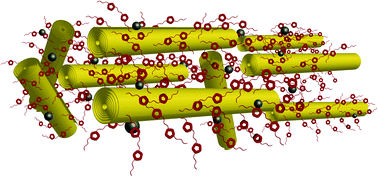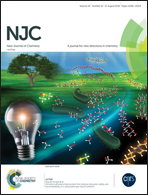Palladium nanoparticles immobilized on halloysite nanotubes covered by a multilayer network for catalytic applications†
Abstract
The synthesis of pure fine chemicals for industrial purposes is one of the most attractive challenges of chemical research. The use of catalytic pathways mediated by palladium nanoparticles (PdNPs) for C–C bond formation is a useful way to obtain these kinds of compounds. To achieve this objective, the PdNPs can be efficiently loaded on a functionalized natural nanostructured support such as halloysite nanotubes (HNTs). Hybrid materials based on thiol functionalized halloysite nanotubes and highly cross-linked imidazolium salts were successfully developed and used for the stabilization of PdNPs. The HNT/Pd hybrids were thoroughly characterized from a physico-chemical point of view and tested as a catalyst in the Suzuki and Heck C–C coupling reactions under microwave irradiation to obtain innovative materials for fine chemicals synthesis. Catalytic tests highlighted the fact that the HNT/Pd hybrids show high performance and full recyclability (up to ten cycles) in both reactions. Regarding the Suzuki reaction, under the best experimental conditions, the remarkable values of a turnover number of 194 000 and a turnover frequency of 3 880 000 h−1 were achieved without metal contamination in the final products.



 Please wait while we load your content...
Please wait while we load your content...